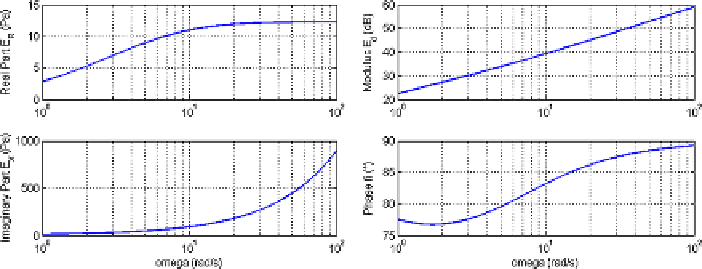Biomedical Engineering Reference
In-Depth Information
Fig. 6.13
The frequency response of the elastic modulus in its complex representation (
left
)and
in its equivalent Bode plot (
right
)
6.4 Relation Between Lumped FO Model Parameters
and Viscoelasticity
A typical feature of FO models is that of characterizing history-dependent sys-
tems [
169
]. Viscoelastic materials, such as polymers, i.e. materials very close in
their dynamics to lung parenchymal tissue, are history dependent [
9
]. The follow-
ing simple, nonlinear relation allows for prediction of history dependence, called
nonlinear superposition, which allows the relaxation function to depend on strain
level:
t
E
t
τ,ε(τ)
dε
σ(t)
=
−
dτ
dτ
(6.30)
0
A similar equation may be written for stress-dependent creep in the compliance
formulation.
t
J
t
−
τ,σ(τ)
dσ
ε(t)
=
dτ
dτ
(6.31)
0
If a series of relaxation tests is done at different strain levels, relaxation will be
observed, but the functional form of the relaxation curves will depend on the strain
level.
However, nonlinearly viscoelastic materials cannot be analyzed via Laplace
transforms because the Laplace transform is a linear operator. The interrelation
between creep and relaxation is developed here by direct construction. Look at
Fig.
6.14
and start by writing the time-dependent strain due to a constant stress
σ
c
as a sum of immediate and delayed Heaviside step functions in time
H(t)
,
N
ε(t)
=
ε(
0
)H (t)
+
ε
i
H(t
−
t
i
)
(6.32)
i
=
0

